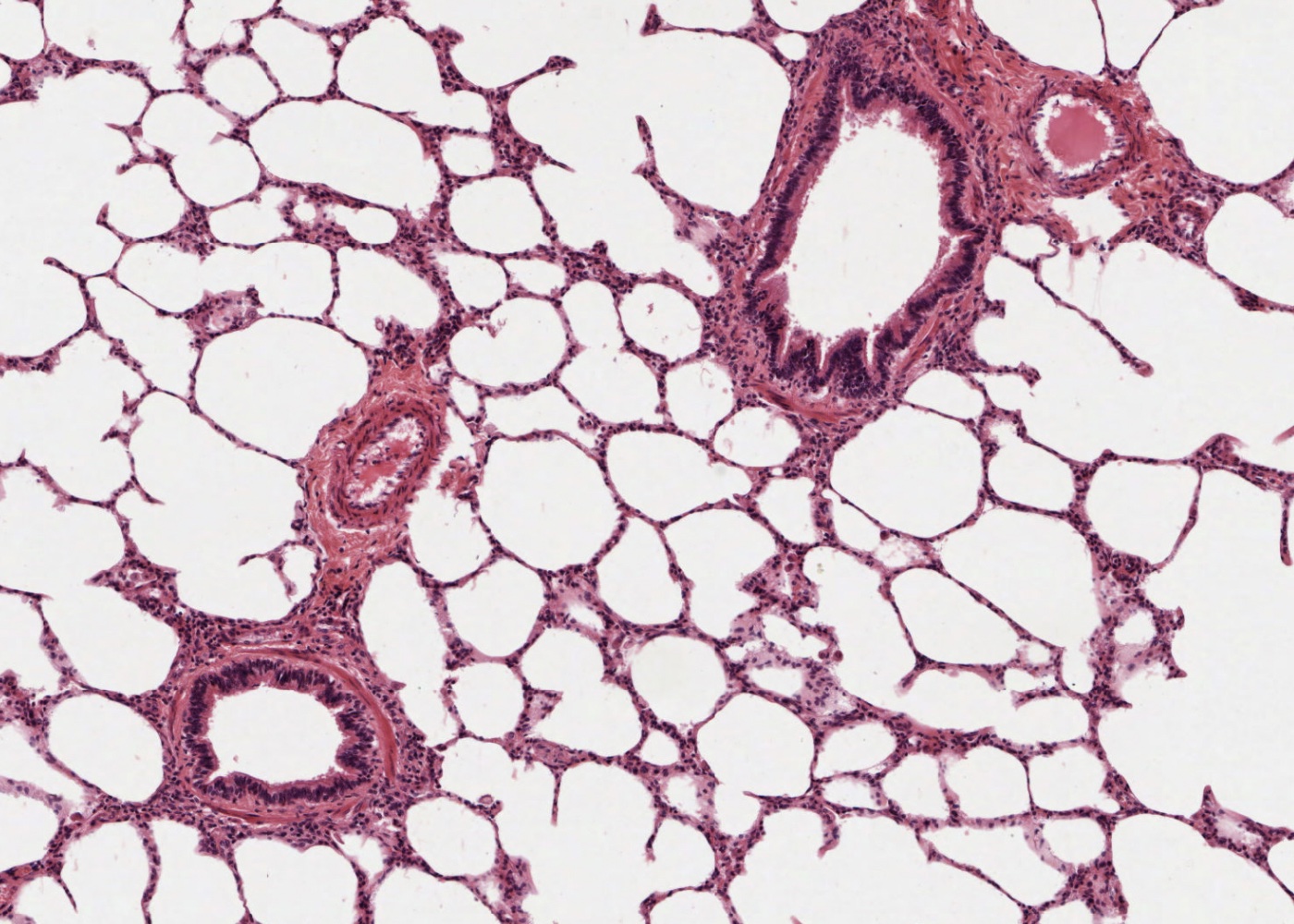The respiratory system includes the nasal cavity, nasopharynx, larynx, trachea, bronchi and the air passages (bronchi, bronchioles and alveoli) within the lungs. The respiratory system functions to condition (warm, clean, moisten etc.) the air we breathe and then permit efficient exchange of gases between the airspaces in the lung and lung blood capillaries.
Learning outcomes
After studying this module, you should be able to
- recognise and describe the cellular components of respiratory epithelium. Where is it located?
- understand the functions of respiratory epithelium.
- understand the functions of the conchae.
- recognise and describe the cellular components of olfactory epithelium. Where is it located?
- distinguish between olfactory and respiratory epithelium.
- recognise the structure and understand the function of the epiglottis.
- describe the components of the vocal folds and ventricular folds in the larynx and associated histological structures.
- distinguish between an extra-pulmonary and intrapulmonary bronchus, bronchiole, respiratory bronchiole, alveolar duct and alveolar sac.
- recognize all the components that make up the interalveolar septum.
- distinguish between type I and type II alveolar cells. Understand the functions of these two cells and other cells within the alveolar wall.
- describe the two separate blood supplies to the lungs and understand their functions.
- recognize the histological structure of the pleura.
- appreciate that the lungs develop from an evagination of the foregut and so the epithelial surfaces of the respiratory system arise from endoderm.

